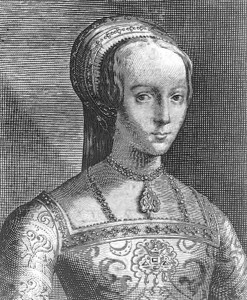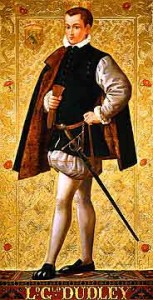
On this day in history, 12th February 1554, Lady Jane Grey and her husband Guildford Dudley were executed for treason after being imprisoned in the Tower of London from the end of July 1553 when Mary successfully assumed the crown and was proclaimed Mary I of England.
The Nine Days Queen
Lady Jane Grey is famously known as “The Nine Days Queen” and in his biography of Jane, “Lady Jane Grey: A Tudor Mystery”, Eric Ives writes:-
“Over the centuries there has been almost a tacit agreement to play down Jane Grey’s revolt…The name by which Jane Grey is universally remembered says it all: “The nine days queen” – not so much because she ruled for nine days (the more correct figure is thirteen), but because her reign was a proverbial “nine days wonder”. Yet when Edward died, Jane’s succession had looked secure.”
and makes the point that “History is always written by the winners”. We don’t remember Jane as Queen Jane but as “Lady Jane” and she doesn’t even make it on to some lists of monarchs of England. How sad!
She is forgotten because she didn’t win, the crown was taken from her and so she was only monarch for 13 short days. We skip from Edward VI to Mary I and gloss over Queen Jane. This is summed up when Matthew Hale calls Jane’s reign “only a small usurpation…which lasted but a few days and soon went out”, but Eric Ives argues against this. He says that if we truly believe that then “we are faced with irrationality – men behaving like lemmings after lives spent successfully negotiating the uncertainty and murky thickness of Tudor politics”. With hindsight, we can see that Jane’s reign was not successful, but there was every reason at the time for people to believe that it would be, that Jane would reign until her death. Men did not throw their lot in with Jane to risk their necks for nothing, they did it because they supported Edward VI’s will, his “Device for the Succession”, and believed that Jane was the rightful queen.
I will write more about Jane’s short reign in the near future, but now let’s talk about the events of the 12th February 1554.
The Execution of Guildford Dudley
Guildford Dudley was the son of John Dudley, the Duke of Northumberland and Edward VI’s chief advisor, and the brother of Robert Dudley, Elizabeth I’s future favourite. He married Jane Grey in May 1553, in a triple wedding which saw Jane’s sister Katherine marrying Lord Herbert and Guildford’s sister Catherine Dudley marrying Lord Hastings.
When Mary I seized the throne, Jane, Jane’s father, Guildford, his brothers and father were imprisoned in the Tower of London. John Dudley, Guildford’s father, was executed on the 22nd August 1553 for high treason. Jane and Guildford were tried for high treason on the 13th November 1553, found guilty and sentenced to death, but it seemed likely that they would be spared until Mary I was forced to act after the Protestant Wyatt’s Rebellion of January 1554.

At 10 o’clock on the morning of the 12th February 1554, Guildford Dudley was taken by Thomas Offley, the Sheriff of London, to a scaffold on Tower Hill. He had asked to see his wife to say farewell but she had refused “as their meeting would only tend to increase their misery and pain.” Instead of seeing this as proof that Jane was “an ice maiden who despised her weak husband”, Eric Ives believes that Jane was struggling “to retain her own focus” and could not bear to see Guildford.
There was no priest on the scaffold with Guildford, which implies that he stuck to his Protestant beliefs, rather than recanting like his father had. He addressed the crowd briefly and then knelt, praying and “holding up his eyes and hands to God many times”. He then asked the crowd to pray for him and then set his head on the block before him. His head was severed with one blow. Ten years after Guildford’s death, Richard Grafton wrote that “even those that never before the time of his execution saw him, did with lamentable tears bewail his death.”
Guildford’s body and head were then taken by cart back to the Tower for burial in the Chapel of St Peter ad Vincula. It is said that Jane saw his body being unloaded and in his chronicle Holinshed writes that Jane met the cart as she herself was being led out to die. Ives writes that, despite her ladies trying to dissuade her, Jane insisted on watching the cart from a window and was said to utter “Oh Guildford, Guildford.”
Continued in The Execution of Lady Jane Grey – Part Two